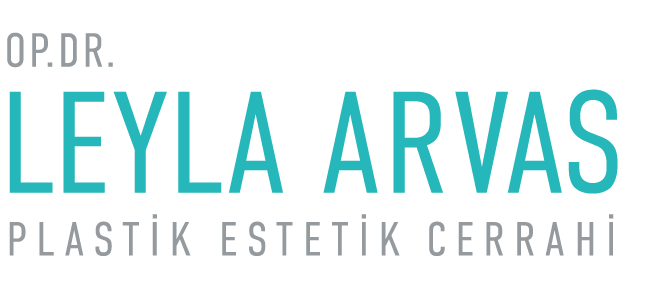Breast reduction is a form of mammoplasty that tries to minimize the amount of breast tissue. Today, breast reduction surgery is a fairly popular cosmetic procedure. Although the operation alters the breasts’ appearance, it also improves their beauty and uprightness. In addition to eliminating physical and psychological discomfort, breast reduction uses the patient’s own tissues and does not include the use of breast implants.
Women who have large breasts visualize themselves with petite, upward-facing breasts. You might have a breast reduction procedure to make large breasts appear more raised up and to lower their volume. Large breasts might cause you physical issues in addition to cosmetic ones. Women with large breasts often experience pain in their necks, backs, and shoulders, as well as rashes and sanitary issues. A breast reduction procedure can be used to solve these issues and make your little breasts appear more beautiful.
What’s Breast Reduction?
Breast reduction surgery is done to generate the breasts in the mutually agreed-upon size based on the patient’s concerns.
For women with large breasts, breast reduction surgery is appropriate. Two breasts in a woman with large breasts may be of different proportions and may appear asymmetrical. Breast reduction surgery ensures that both breasts are symmetrical, giving the patient a flawless appearance.
Women must let the doctor know whether they wish to experience the birthing and nursing procedures after having breast reduction surgery. For individuals who desire to breastfeed, many breast reduction surgical approaches might be explored.

Depending on the individual and the size of the breasts, scars from a breast reduction procedure might differ. Around and below the nipple, there may be scars in the shapes of an L, I, or reverse T. Scars on the nipple are less noticeable because of its dark hue. From the front, scars below the breasts are invisible. In a breast reduction procedure, round, upward-facing breasts are the intended outcome.
Why Do Breasts Grow Irregularly?
Several factors can cause breast tissue to grow. These causes might be to blame for this change in form and rise in breast size. Genetic factors are among the most significant causes of disproportionately large breasts. Growing breast tissue is a familial hereditary legacy. In addition to genetics, other variables that contribute to breast growth include gaining weight, giving birth, and nursing.
In this situation, genetics is crucial. Your chances of developing huge breasts are higher than average if family members have bigger breasts. Frequently, the patient’s body’s general proportions have a direct impact on breast size.
Another important aspect that significantly affects the change in the size and form of the breast is breastfeeding. The mammary glands are directly stimulated to expand during lactation. Typically, once breastfeeding is finished, individuals are unable to reach their earlier quantities. Or even if it does, they could run into a sagging issue. The breast is decreased during cosmetic surgery, and the skin is stretched and molded appropriately.
Why Should Bigger Breasts Have To Be Reduced?
When a person puts on weight, her breasts may enlarge; conversely, if she loses weight, her breasts may droop. This issue can be resolved with a breast lift and reduction procedure. Shoulder and back pain is among women’s major issues with large breasts. Large breasts can be painful and throw off a person’s upper body equilibrium.
As large breasts rub against the abdomen, discomfort, redness, and an unpleasant odor are possible side effects. Women then experience issues with self-esteem as a result of this.
Women’s physical activity is limited by large breasts, and they are unable to wear whatever they desire. Bra straps can also cause abnormalities because they leave a hollow in the shoulder of women with large breasts.
Tests And Requirements For Breast Reduction
Our plastic surgeon will explain the expected outcome, the procedure’s steps, and the maximum size that can be achieved to you during the initial consultation before breast reduction surgery. A number of exams to evaluate your health and blood clotting will also be required. Blood thinners must be stopped for a specific amount of time before the procedure. The patient will need to go through a number of preparatory tests and exams in order to minimize any potential adverse effects and risks, and detect contraindications:
- Mammography (for adults older than 40 years);
- Mammary gland ultrasound;
- Broad analysis
- COVID test
- Blood and urine test
If additional testing or exams are required, they may include therapist, entomologist, or anesthesiologist visits. It’s crucial to let your doctor know if you routinely use any medications. Drugs that impact blood coagulation in particular fall under this category.
How Does Breast Reduction Work?
Breast reduction surgery is done while patients are under anesthesia. Since fat and glandular tissue make up the majority of the mammary gland, both breasts’ extra tissue is removed during surgery to achieve the desired size. When there is asymmetry, the procedure is often done on the breast that has the best shape of the two breasts. Breast reduction surgery results in a natural breast lift by reducing not just the breast tissue but also the skin around the breasts. Only skilled plastic surgeons should execute this procedure since the female breast is a particularly delicate region that needs specific skills. In any situation, you must proceed with caution to avoid problems and maintain the breast’s tenderness. Skin tightens when extra breast volume is eliminated, and the position and size of the areola alter as a result. Therefore, a breast lift is also offered when the breast tissue diminishes. A poor outcome may happen if all essential adjustments are not done throughout the procedure.
Areola and nipple transfer; removal of extra skin, glandular layer, and excision of adipose tissue; development of an anatomically sound and aesthetically pleasing breast shape.
Due to their extensive mammoplasty knowledge, quartz plastic surgeons can create sutures that will gradually dissolve. In order to make the patient’s recovery from breast reduction surgery as comfortable and successful as possible, a thorough list of suggestions is also provided.
Getting Breast Reduction: What To Expect?
Like any operation, breast reduction surgery necessitates a healing phase. Typically, the patient is being watched closely in the hospital on the first day following breast reduction surgery. You can return home the day after a breast reduction procedure as long as you follow all of your surgeon’s instructions and suggestions. Since the pain will often be severe for the first two to three days following surgery, the doctor will recommend medicines until the next evaluation.
Following breast reduction surgery, there must be limits on sex, sports, and some other physical activities, as well as adherence to medical advice, throughout the recuperation time.
The most crucial thing is to routinely see your doctor and adhere to all rehabilitation guidelines; do not become anxious during this time.
Since some tissue is removed during breast reduction, the recovery process won’t be complete until the skin and tissue around the breasts have totally stabilized and recovered.
The patient will experience tightness and pain in the chest skin during the initial days. Swelling or bruising may happen sometimes. Hematomas and infections are less frequent complications.
Breast Reduction Aftercare Tips
After a breast reduction, proper breast care is crucial for a quick recovery and successful outcome. On the first day of the procedure, any contact with water is absolutely prohibited. However, as long as your doctor permits it, you can take a shower after a few days. A unique medication will be prescribed by Dr. Leyla Arvas. You can apply the ointments or gels that our doctor suggests to help the edema go away.
The patient is seen by our doctor the next day after the breast reduction treatment. Dr. Leyla Arvas will conduct wound dressing following surgery and provide pertinent advice if the wound is stabilized.
The woman’s breast is bandaged with elastic after the procedure. It encourages the breast’s correct attachment and inhibits the development of edema. The wound is treated, the bandages are taken off, and a plaster cast and compression bra are reapplied on the second postoperative day.
Every woman will experience breast reduction differently. The primary and most prevalent of these include numbness and loss of feeling in the breasts, discomfort and pain in the mammary glands, a feeling of tightness in the skin, throbbing pain, tingling, and burning sensations, as well as heaviness and discomfort.
All of these feelings eventually go away with time, provided that correct post-breast reduction care and rehabilitation regimen instructions are followed.
Which Type Of Bra Should You Choose For Breast Reduction?
Following a breast reduction, the healing period following the procedure should be spent wearing a compression bra. This bra will support the new breast form and hasten and ease the healing process.
It is advised to focus on the general health of the patient’s entire body rather than simply their chest. You should thus be careful to ingest wholesome meals, minerals, and vitamins. It’s also essential to plan your activities well, including short outside strolls.
Pain and discomfort should be treated with analgesics.
It’s crucial to pick the proper sleeping position: your head has to be elevated and you need to lie on your back. For a few weeks, bad behaviors like drinking too much alcohol and smoking should be halted or decreased. If you schedule follow-up visits with our doctor, your breast reduction recovery will go smoothly and quickly.
How To Reduce Swelling After Getting Breast Reduction?
During this time, using cold compresses might lessen swelling. Typically, swelling follows breast reduction surgery. Fluid builds up as a result of the mammary gland tissue reacting, which causes edema. Usually, edema starts to develop right away following surgery, progresses over the course of a few days, then starts to go away.
After a breast reduction, edema is immediately relieved with gentle massage techniques, and less swelling forms with the use of a compression bra that securely secures the breast. In order to reduce swelling, physical activity should be avoided during the first week. Instead, relaxation is advised.
After a week or two, the swelling goes down as part of the regular healing process. However, according to the patient’s unique body characteristics, the procedure for getting rid of edema after breast reduction may differ.
Contact your doctor right away if any further inflammation-related symptoms, such as persistent swelling, redness, or fever in the region, appear to discuss the possibility of infection. The sooner this problem is reported, the sooner help will arrive.
Breast Reduction Prices In Turkey
The cost of breast reduction surgery highly depended only on its difficulty. Only the excision of extra breast tissue is not done throughout the procedure. A number of procedures are also carried out by the surgeon to preserve or establish breast symmetry. The surgeon gives the breasts a lovely shape and restores their suppleness. The areola must be reshaped, expanded, and the nipple elevated above its original position.
Keep in mind that every surgical procedure needs a careful evaluation and planning. This enables you to anticipate any potential contraindications and to reach the patient’s desired outcome precisely. The surgeon may request additional consultations with other experts if required.
Call the number on our website to schedule an online or in-person consultation if you want to reclaim your old self-confidence, get rid of medical and psychological conditions, and have the body of your dreams all at once.
